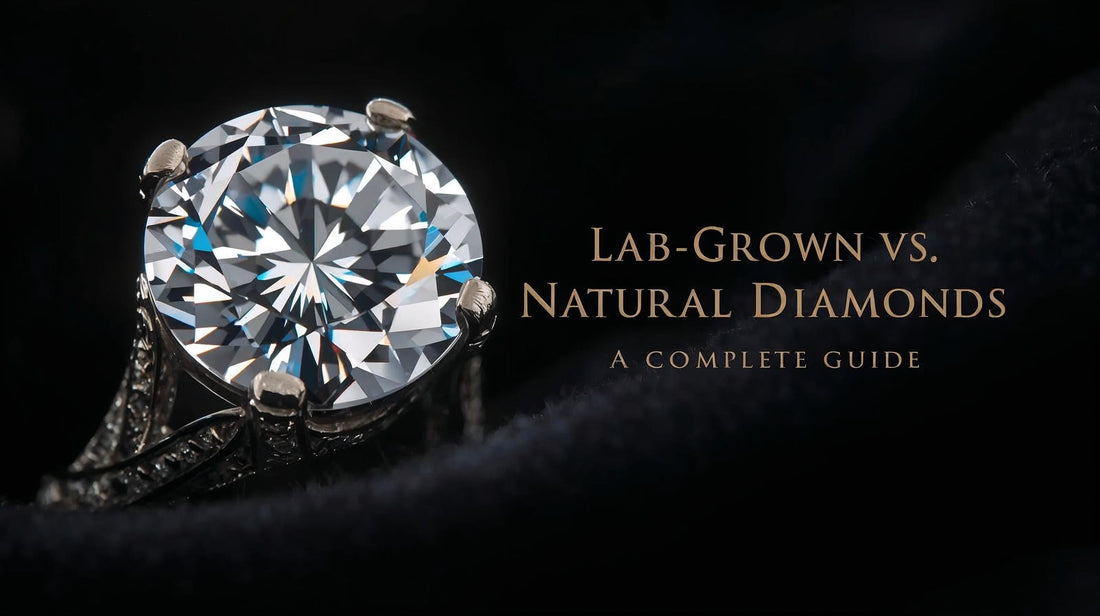
How Do I Differentiate Between Lab-Grown and Natural Diamonds While Purchasing?
jewels jawaharartDiamonds are cherished worldwide for their brilliance, durability, and timeless appeal. However, with the rise of lab-grown diamonds, buyers often find themselves confused when trying to distinguish them from natural diamonds. Both look identical to the naked eye, yet their origins and certain characteristics differ. If you’re planning to invest in diamond jewelry, it’s essential to understand these differences to make a confident purchase.
What Are Lab-Grown Diamonds?
Lab-grown diamonds, also known as synthetic or cultured diamonds, are created in controlled environments using advanced technological processes. These processes replicate the conditions under which natural diamonds form in the earth’s crust, resulting in a stone that is chemically, physically, and optically identical to a mined diamond.
Two common methods are used:
HPHT (High Pressure High Temperature): Mimics natural diamond formation through intense heat and pressure.
CVD (Chemical Vapor Deposition): Uses carbon-rich gases to grow diamond crystals layer by layer.
Because they are grown in a lab, these diamonds are generally more affordable and eco-friendly compared to mined diamonds.

What Are Natural Diamonds?
Natural diamonds are formed deep within the Earth’s mantle over billions of years through heat and pressure. They are mined from various parts of the world and often carry unique inclusions or flaws that tell the story of their natural formation. Their rarity contributes to their higher price and symbolic value.
Key Differences Between Lab-Grown and Natural Diamonds
While both types look stunning, here are a few ways to tell them apart:
1. Origin
Lab-grown diamonds: Man-made in laboratories.
Natural diamonds: Naturally formed over billions of years in the Earth.
2. Price
Lab-grown: Typically 30–40% less expensive.
Natural: Pricier due to rarity and natural formation process.
3. Inclusions & Patterns
Lab-grown: May show growth patterns or metallic inclusions detectable under specialized equipment.
Natural: Usually contain natural inclusions such as tiny minerals or irregular growth marks.
4. Certification
Reputable labs like GIA or IGI can determine whether a diamond is lab-grown or natural. Always check certification before purchasing.
5. Resale Value
Natural diamonds: Generally hold better long-term resale value.
Lab-grown diamonds: Resale value is lower due to increasing supply and affordability.
Should You Buy Lab-Grown or Natural Diamonds?
The decision depends on your priorities:
If you value heritage, rarity, and long-term investment, natural diamonds are the way to go.
If you prefer sustainability, affordability, and modern technology, lab-grown diamonds are an excellent choice.
Both options deliver unmatched sparkle and beauty-it all comes down to your personal preference.

Expert Tip for Buyers
When purchasing, don’t rely solely on appearances. Always:
Request a certificate from a reputed lab.
Ask your jeweler directly if the diamond is natural or lab-grown.
Compare prices to ensure you’re getting fair value.
For timeless jewelry crafted with elegance, explore Jewels & Jawaharat | Timeless Jewelry & Elegant Designs. Their pieces reflect sophistication, whether you’re investing in natural or lab-grown diamonds.

Making the Right Choice
Distinguishing between lab-grown and natural diamonds isn’t always easy without expert tools, but with the right knowledge and guidance, you can make the perfect choice. Remember, both carry beauty and brilliance—the right one for you depends on your budget, values, and the meaning you want to attach to your jewelry.
Whether you choose lab-grown for its innovation or natural for its legacy, diamonds will always symbolize love, strength, and eternity.

#LabGrownDiamonds #NaturalDiamonds #JewelryTips #DiamondBuyingGuide
#SustainableJewelry #JewelsAndJawaharat
